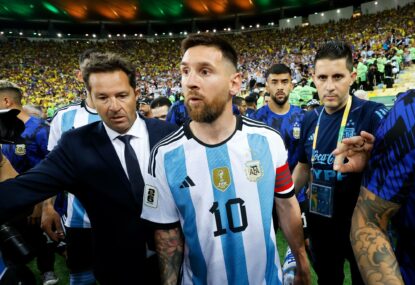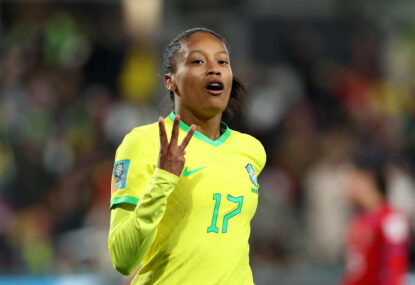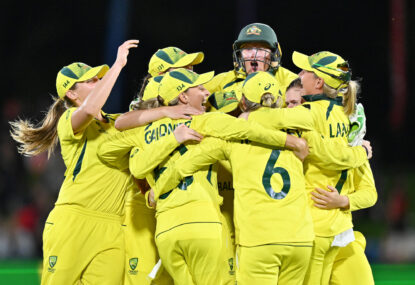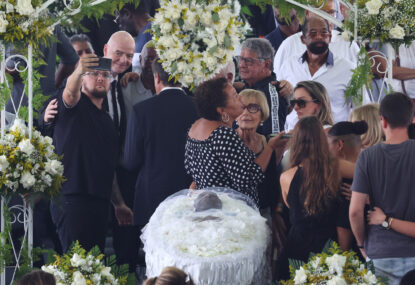Chances are, if you drop the name Edson Arantes Do Nascimento into a conversation, the football followers in the group would nod and smile. Those not immersed in the beautiful game would look slightly blank.
But then, if you called the man by the name the world knew him – Pele – there wouldn’t be a person who didn’t know who you were referring to.
Pele’s passing at the age of 82 closed the chapter on an era of football that is probably unrecognisable to the saturation coverage of the game today. That Pele’s football career finished in 1977, yet the fact he was still talked about right up to his death is testament enough to the enduring legacy of his outrageous talent.
However, he is one of a handful of sporting stars whose name and image transcended the stadiums they graced. Universally loved in his native Brazil, he is so astonishingly popular that his funeral will take place over three days, to give the expected millions of people the chance to pay their final respects.
Pele’s life story – emerging from poverty in Bauro, Sao Paulo to sign for Santos as a 15-year-old – has become an oft-repeated fable and a storyline arc for every rags-to-riches screenplay that proceeds it. But Pele’s story was no fable.
Kids of my era watched video of the superstar as a youngster, juggling grapefruits or newspaper-stuffed socks as a makeshift ball because the family were too poor to afford a real one. He scored in his professional debut on September 7th, 1956, against Corinthians. His rise started there.
Less than two years later, Pele scored twice in the World Cup Final as Brazil made history, beating Sweden 5-2, consigning the Swedes to some unwanted history, as the first and only host nation to lose a Final.
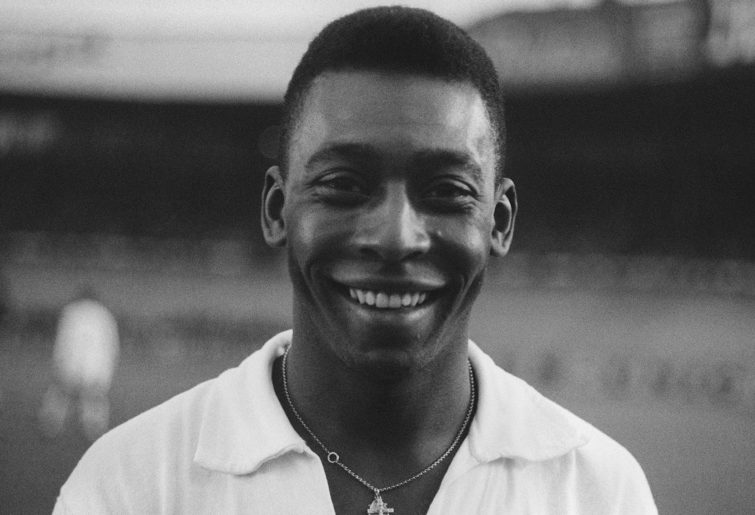
Pele is one of the greatest footballers in history. (Photo credit STAFF/AFP via Getty Images)
Brazil wore hastily purchased blue shirts that day with numbers and Brazilian emblems sewed on hours before the match, as the concept of “away” kits hadn’t really taken hold. They still use blue as their alternate kit to this day. Legend has it that they had white shirts they could have used but the players were superstitious of the colour as they’d lost the 1950 Final in white.
He went on to become the only player to win three World Cups, in 1958, 1962 and 1970. His participation in the 1966 tournament was cut short due to brutal tackling designed – successfully as it turned out – to rub him and Brazil out of the finals.
While retiring from the national team after the 1970 final against Italy, Pele continued to play for Santos. The club had become something of a travelling roadshow, based entirely on the legend of their amazing No.10. They toured the world in the compressed Brazilian off-season, playing exhibition games to packed crowds, including here in Australia when Pele made his only playing appearance in the country.
On June 17, 1972, Santos and Australia played in front of 32,000 fans at the old Sydney Sports Ground (even though there was a rugby international being played next door at the SCG). Pele didn’t score but he laid on a goal in a 2-2 draw.
Before that historic day for the game locally, he had led Santos to Copa Libertadores wins in 1962 and 1963. He became the leading scorer in the fabled club’s history. He even temporarily stopped a Civil War in Nigeria when the opposing factions agreed on a ceasefire so they could watch him play in an exhibition game in Lagos.
He played for Santos from 1956 to 1974, something that would be unimaginable today with the impossible lure of the major European leagues. However, even during that time, numerous offers were made by the biggest European clubs for Pele to join them. President of Brazil, Janio Quadros declared Pele a national treasure, and this apparently made it hard for him to transfer overseas.
His name and legend became world-renowned, even in an age where there was no 24-hour news cycle, and the globe was less connected than it is today. He signed for North American Soccer League club New York Cosmos in 1975 and was almost solely responsible for the early insane popularity of the fledgling American league (which died a fairly rapid death after his retirement).
Pele played a retirement match in October 1977, at New York’s Giants Stadium in front of 77,000 fans. The game was between Cosmos and Santos, and Pele played the first half for New York, and the second half for Santos. It was televised live around the world and many of us wagged school to go home and watch it. The great man had finished his playing career as he had begun it – in the famous all-white of Santos.
For this young aspiring footballer, coaching clinic videos would always feature Pele.
Dribbling, shooting, heading, demonstrating his famous banana kick, or his equally as renowned bicycle kick (a version of which now exists in mixed martial arts and his known still to this day as the “Pele kick”). Kids of my age soaked up the outrageous skills of this giant of a man – who was in fact, not so statuesque at only 173cm, or 5 foot 8 in the old scale. It is no exaggeration to say he inspired millions to kick a football and dream of greater things.
In retirement, he became a champion of the downtrodden, a supporter of many causes. He fought to stamp out racism and was the FIFA Ambassador against racism. he worked with UNICEF to help children in poverty, and set up the Pele Foundation to help children in marginalised circumstances access education and healthcare. He served as his nation’s Sports Minister. The causes he supported grew exponentially as footballing retirement only hastened to add to his worldwide identity.
In 1990, he came to Australia as a part of a promotional tour on the back of The Pele Albums, an autobiographical box set of books tracing his life and achievements. Along with my teammates in the St George NSL youth team of the day, I was lucky enough to meet this icon after a game against Marconi at St George Stadium.
Somehow, we were photographed together with awestruck teammates, Pele with his arm around me – and I swear I didn’t knock over everyone else to get next to him. I think I might have mumbled something inane, like, “It’s an honour to meet you,” and he smiled and said, “No, it’s an honour to meet you! Goalkeepers made my life hard!”
And then he was away, being photographed with the next group of youngsters.
Humble, generous, engaging and a gentleman of the game. That St George team didn’t make the semi-finals in the NSL’s first summer season. But we got to do something far more memorable – we got to meet our hero.






























































































